 Your fire team is on a peacekeeping assignment in a civil war torn country where a shaky cease-fire is only a few weeks old. Your duties have been a combination of patrolling village streets and community restoration and aid projects. You’re currently assigned to a village whose control was disputed by the contending parties in battle and now is part of tense, ongoing cease-fire negotiations. Marine presence, in any form, is resented in this village by one of the factions. Battalion intelligence believes there is such vehemence because the Marine presence has thwarted the efforts of this one faction to intimidate the opposition in the village into leaving and thereby gaining control for use as a card in the negotiations. While armed exchanges between the feuding groups and Marines have been few, the extensive use of mines and boobytraps during the civil war has meant that such weapons have continued to claim victims on all sides.
Your fire team is on a peacekeeping assignment in a civil war torn country where a shaky cease-fire is only a few weeks old. Your duties have been a combination of patrolling village streets and community restoration and aid projects. You’re currently assigned to a village whose control was disputed by the contending parties in battle and now is part of tense, ongoing cease-fire negotiations. Marine presence, in any form, is resented in this village by one of the factions. Battalion intelligence believes there is such vehemence because the Marine presence has thwarted the efforts of this one faction to intimidate the opposition in the village into leaving and thereby gaining control for use as a card in the negotiations. While armed exchanges between the feuding groups and Marines have been few, the extensive use of mines and boobytraps during the civil war has meant that such weapons have continued to claim victims on all sides.
Presently, your fire team is on a sweep in the center of the village, which is characterized by debris strewn cobblestone streets, narrow alleyways, and stone buildings in various states of disrepair. The main square of the village is dominated by a large fountain. The square is used by all as a local market. The village’s factional majority has also taken to using the square as a gathering point for its bands to vocalize their dislike of Marines. Such gatherings are not forbidden by your rules of engagement if conducted peacefully and without arms. Trailing your patrol throughout the day, of its own accord, is a U.S. news crew from CNN.
Your fire team has just arrived in the square. In addition to your standard weapons, you have five rounds of tear gas for the M203 (40mm grenade launcher) and a radio that links you to your squad leader and platoon leader. The remainder of your squad on the patrol is located to the east some 50 to 75 yards away. Suddenly, close by, there is a small explosion. You turn and see a cloud of dust to your left rear. A scream of pain reaches your ears. “Johnson tripped a boobytrap in the alleyway.” Immediately the film crew is in action close at hand. You glance quickly over your shoulder to check your front and see villagers, some of them women, marching toward the square. Two men are armed with bolt-action rifles. “Corporal, I’ve got a dozen plus people heading toward me from the west, maybe 100 yards out. They don’t look happy. They’re chanting something, and they have banners with ‘U.S. and Marines Out,'” barks your automatic rifleman. Just then a burst of M16 fire erupts to your left. “Sniper on the balcony to your front!” You see Martinez dive for an open doorway.
What now, Corporal?
Requirement
In a time limit of 30 seconds issue any orders/reports you might make. Provide a sketch of your actions and the rationale behind them. Submit your solution to Marine Corps Gazette, TDG #02-1, P.O. Box 1775, Quantico, VA 22134, fax 703-630-9147, or e-mail <[email protected]>.


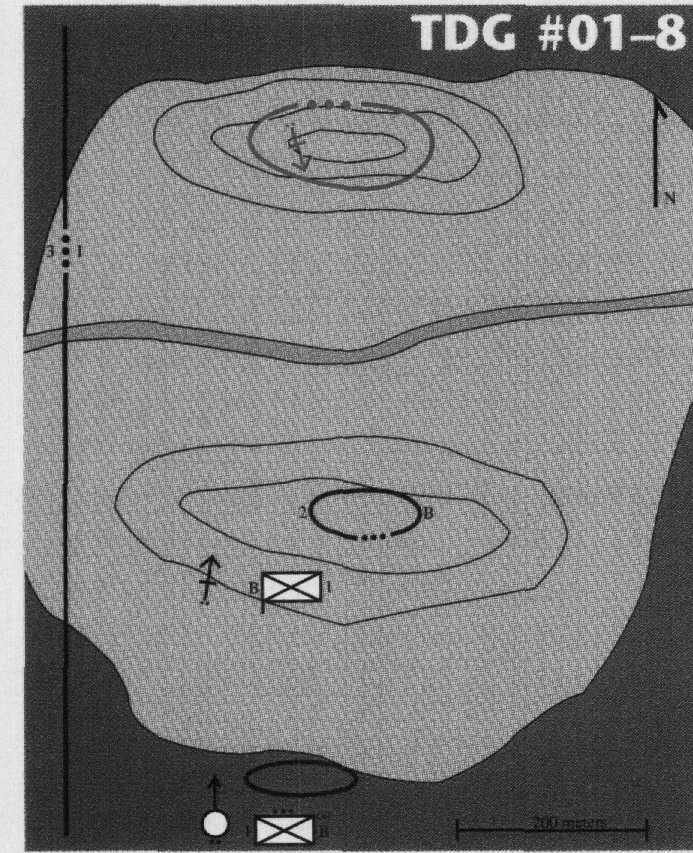
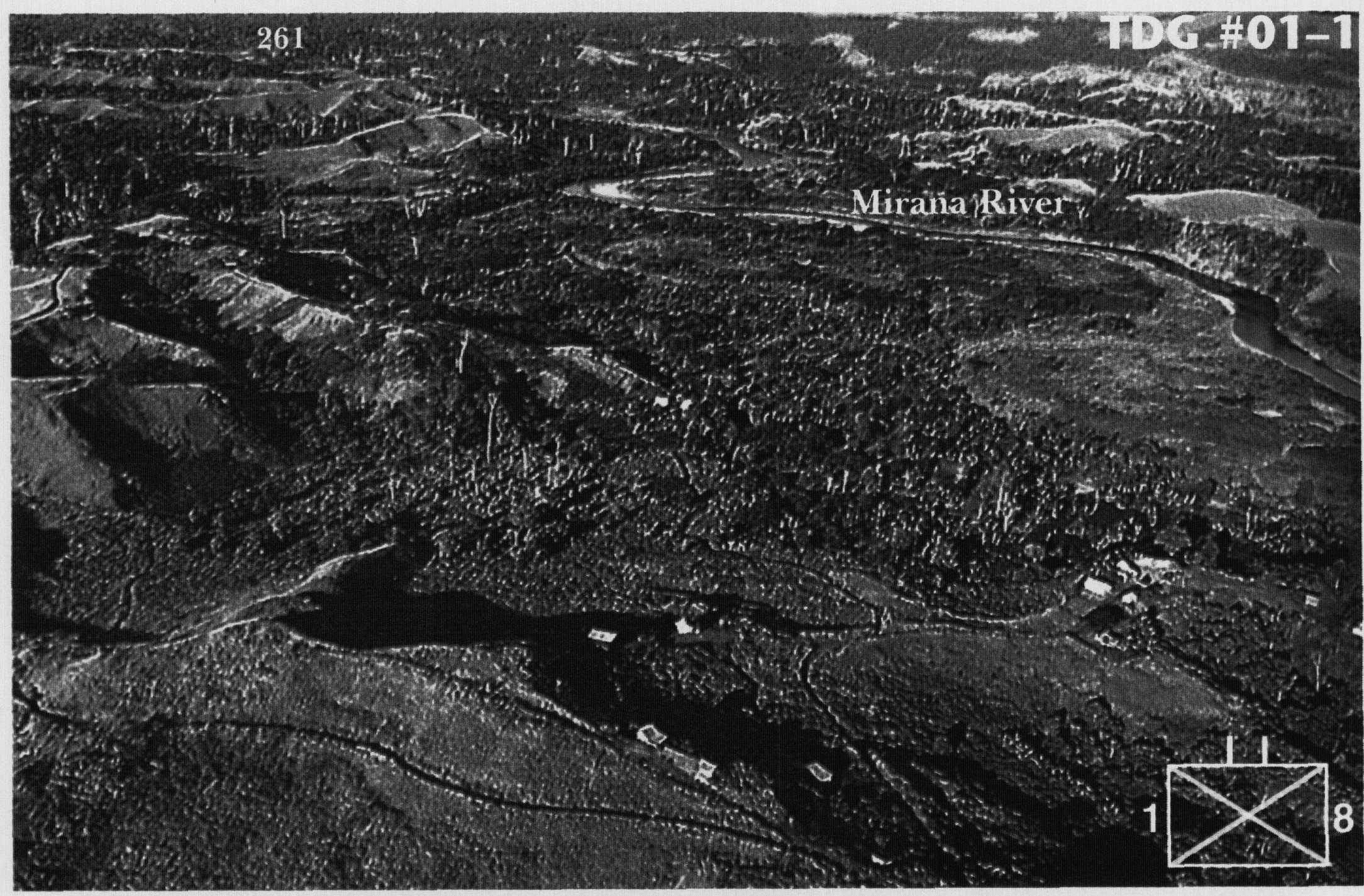

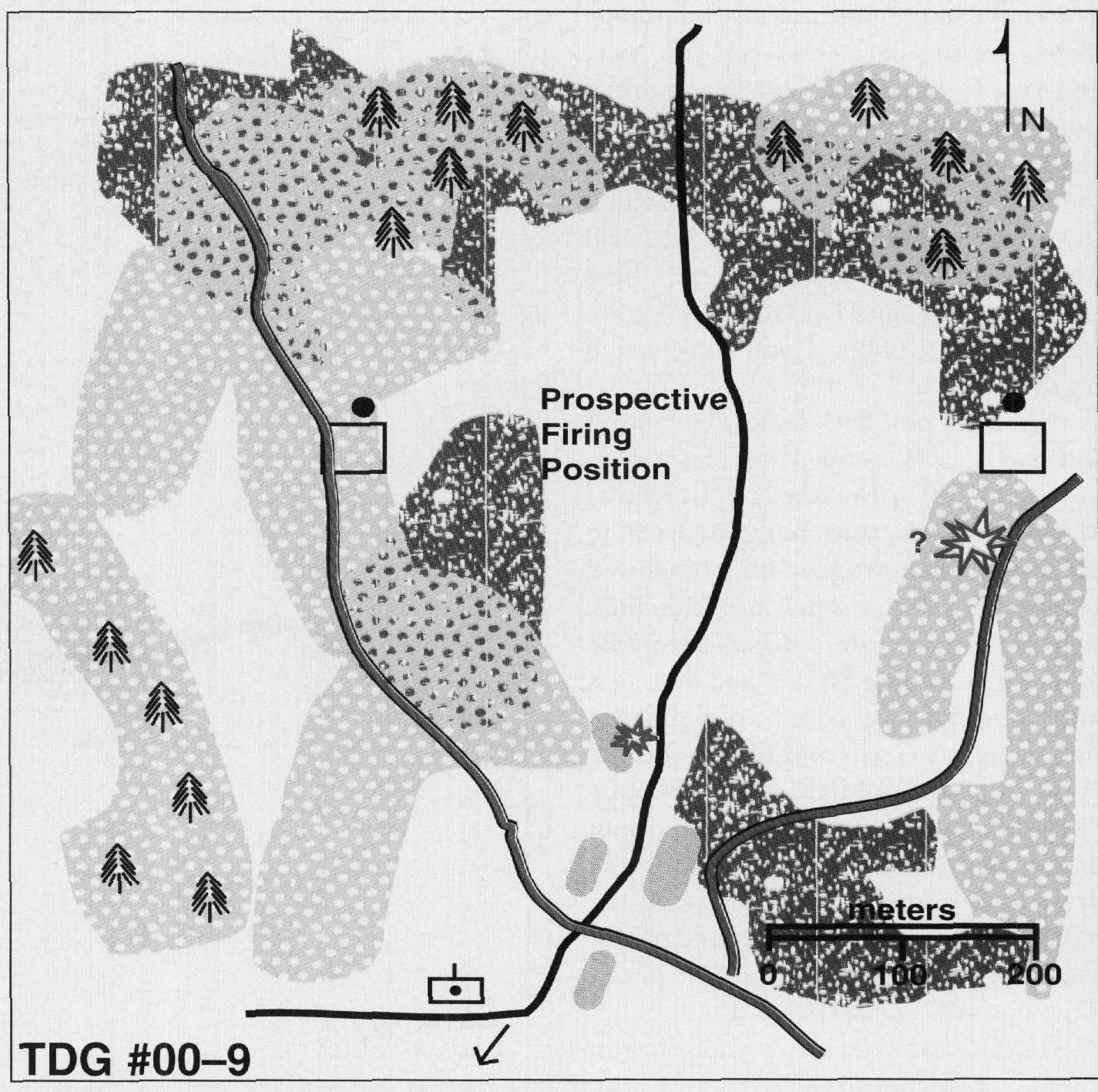
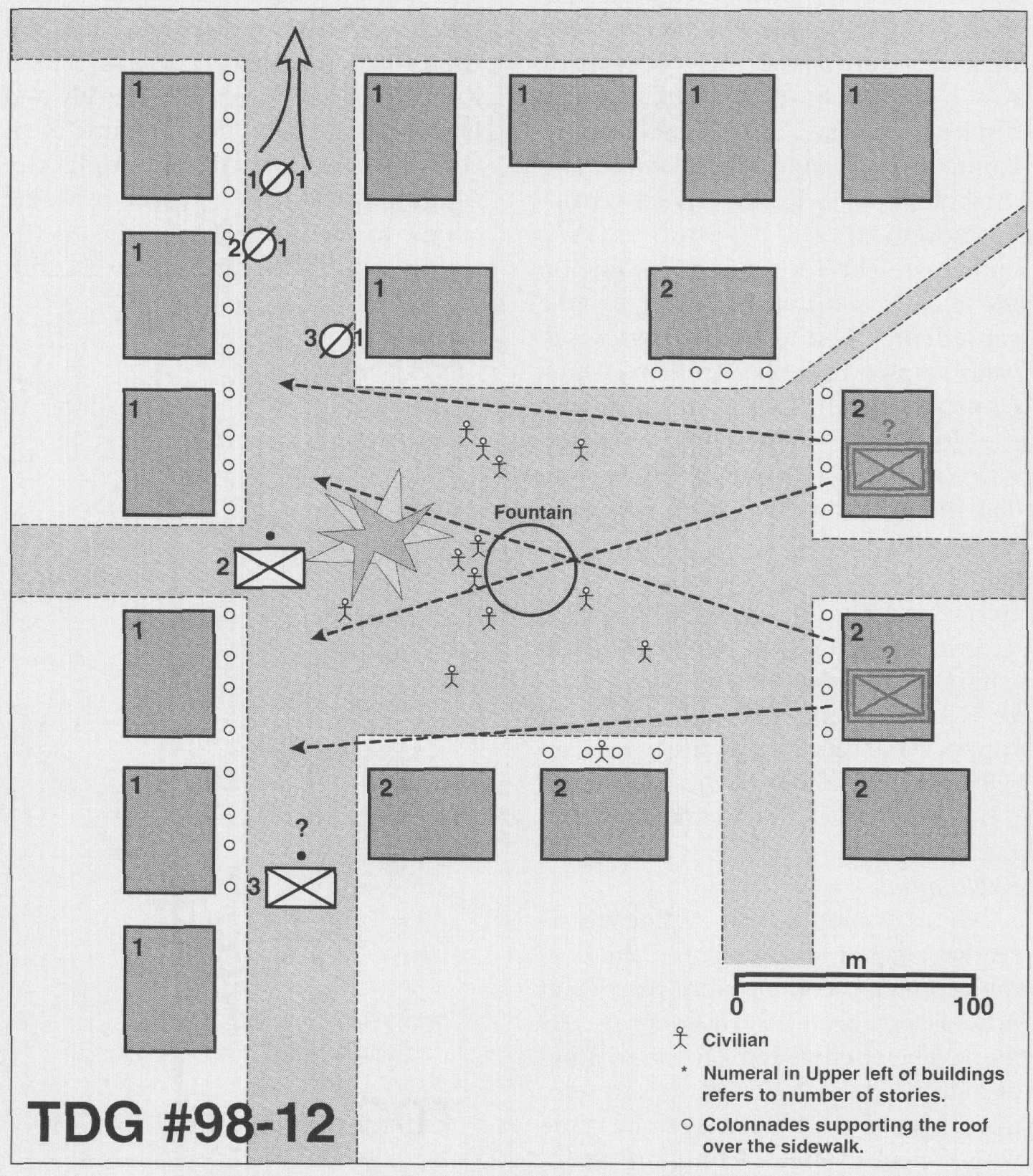
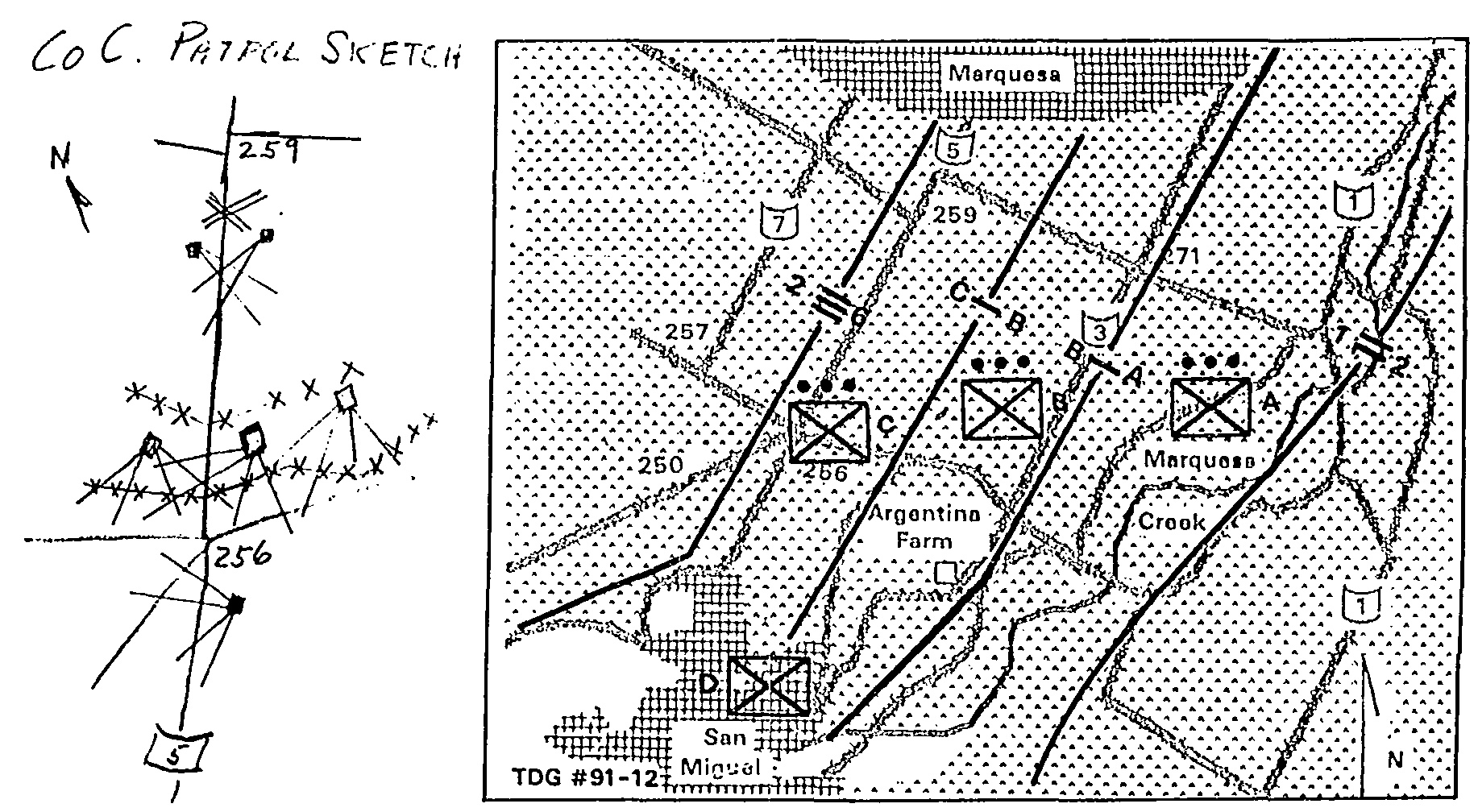
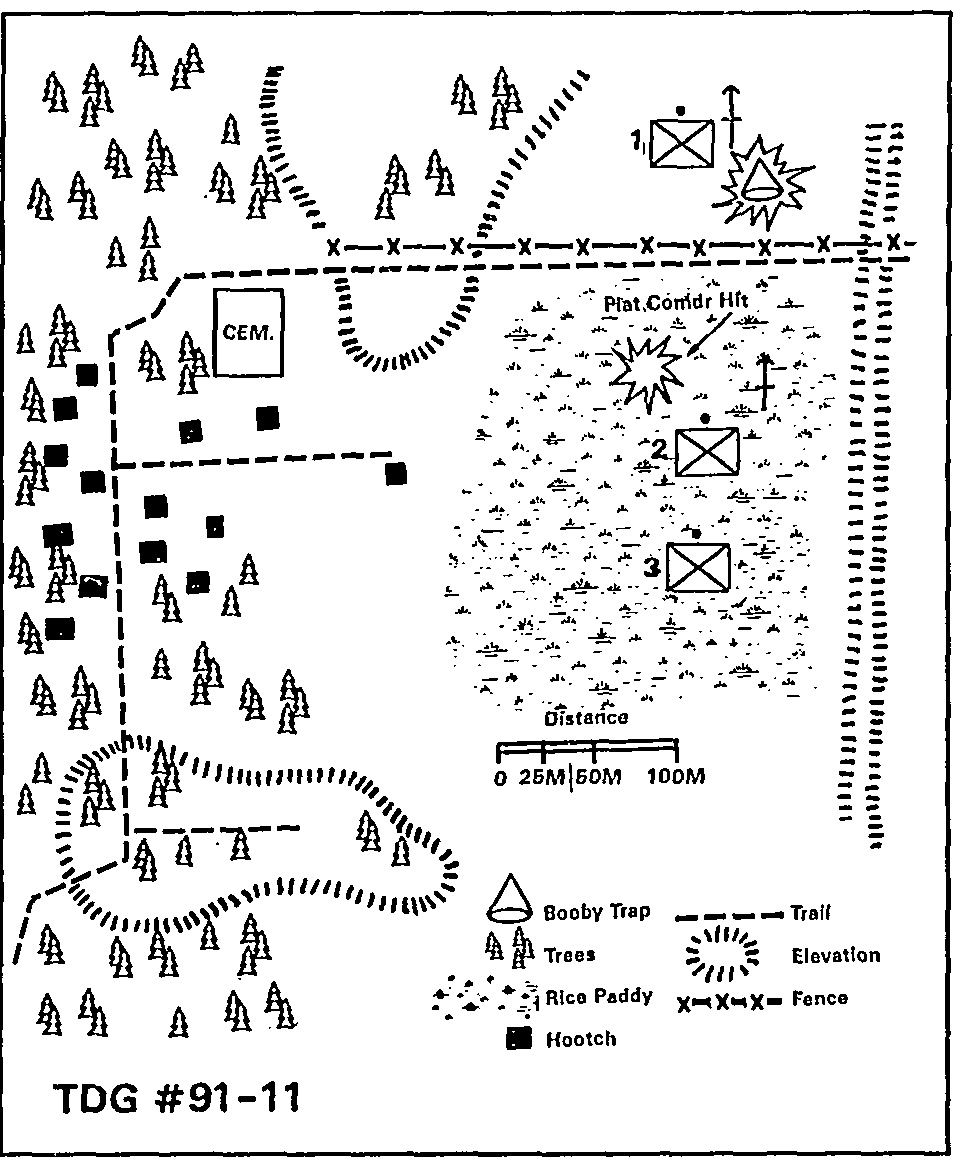
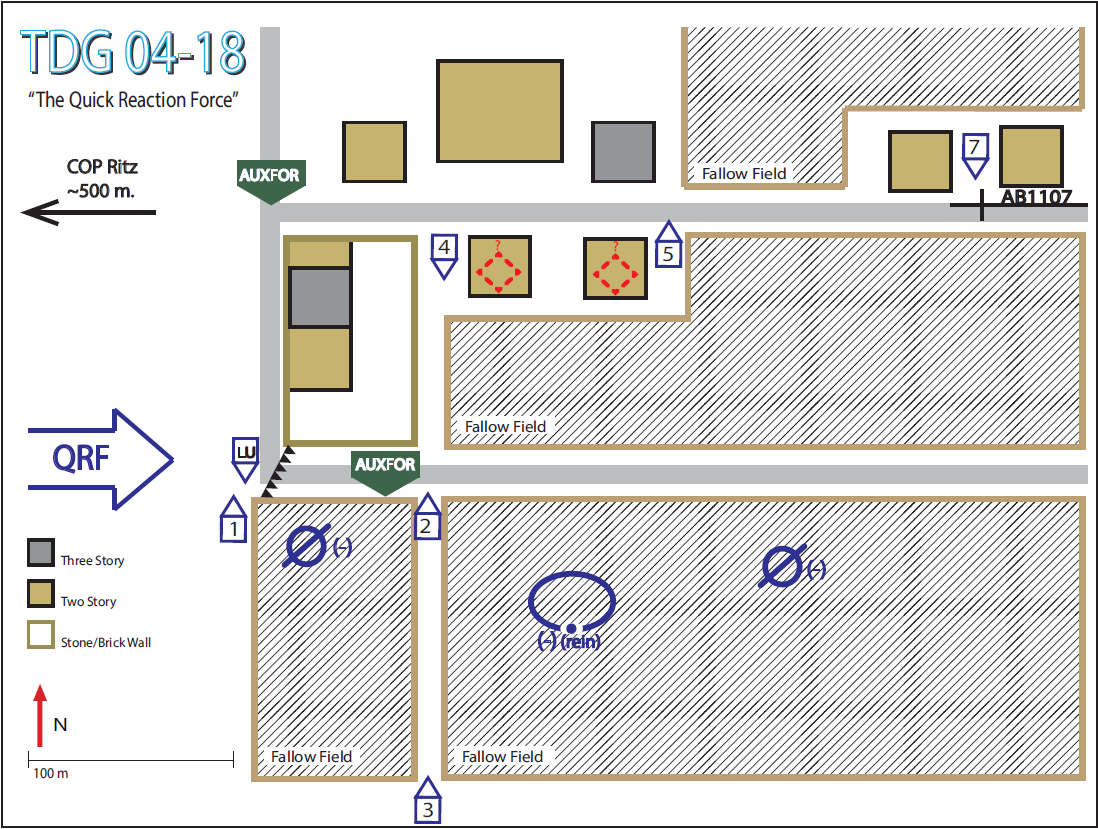
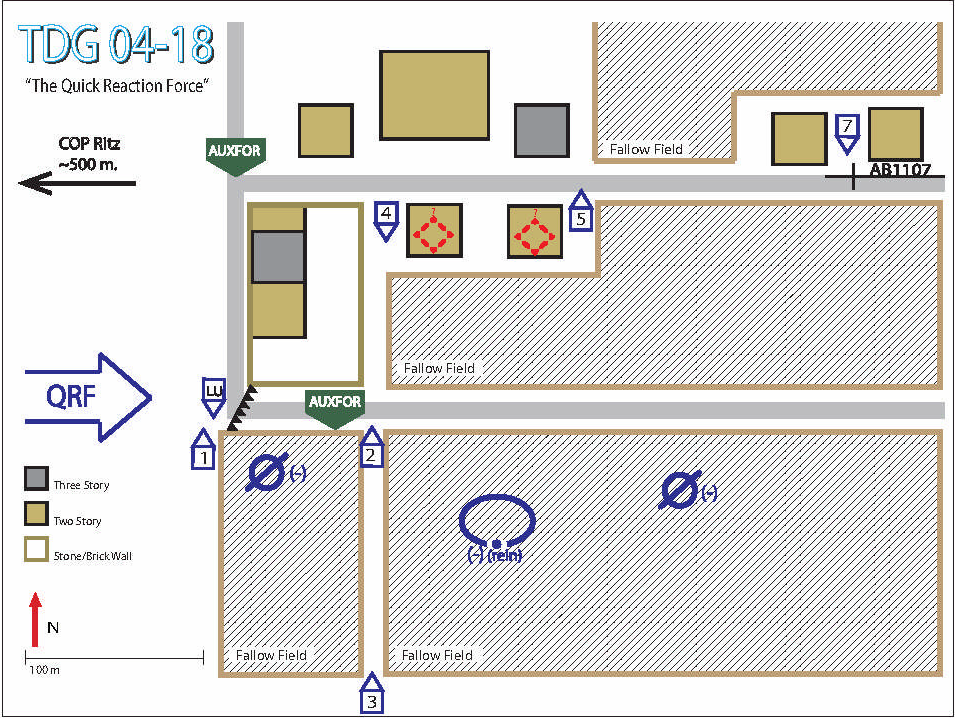 You are the platoon commander of Second Platoon, A Company, 1st Battalion, 1st Marines. Since your 3d squad is conducting a day security patrol, the remainder of your reinforced platoon is currently “standing by” on a plus-fifteen-minute alert as the Company’s quick reaction force (QRF). This means your company commander expects you be able to depart friendly lines with your force in fifteen minutes or less from the time support is requested.
You are the platoon commander of Second Platoon, A Company, 1st Battalion, 1st Marines. Since your 3d squad is conducting a day security patrol, the remainder of your reinforced platoon is currently “standing by” on a plus-fifteen-minute alert as the Company’s quick reaction force (QRF). This means your company commander expects you be able to depart friendly lines with your force in fifteen minutes or less from the time support is requested.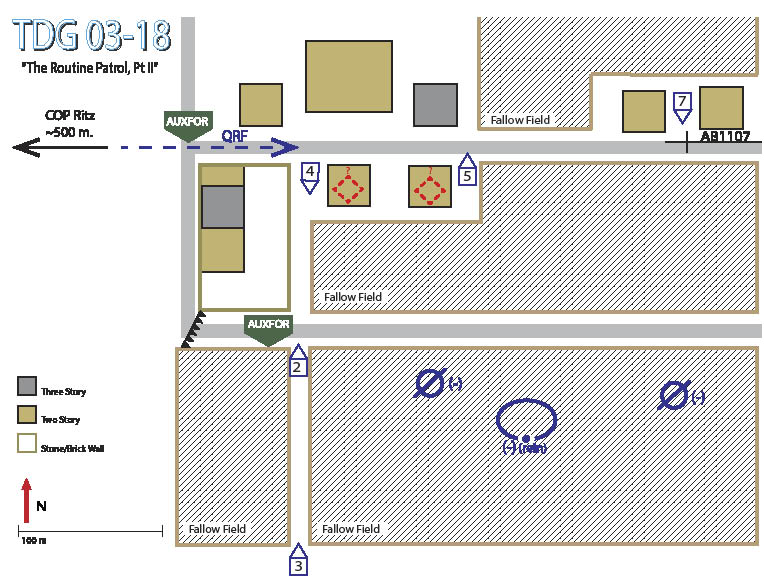
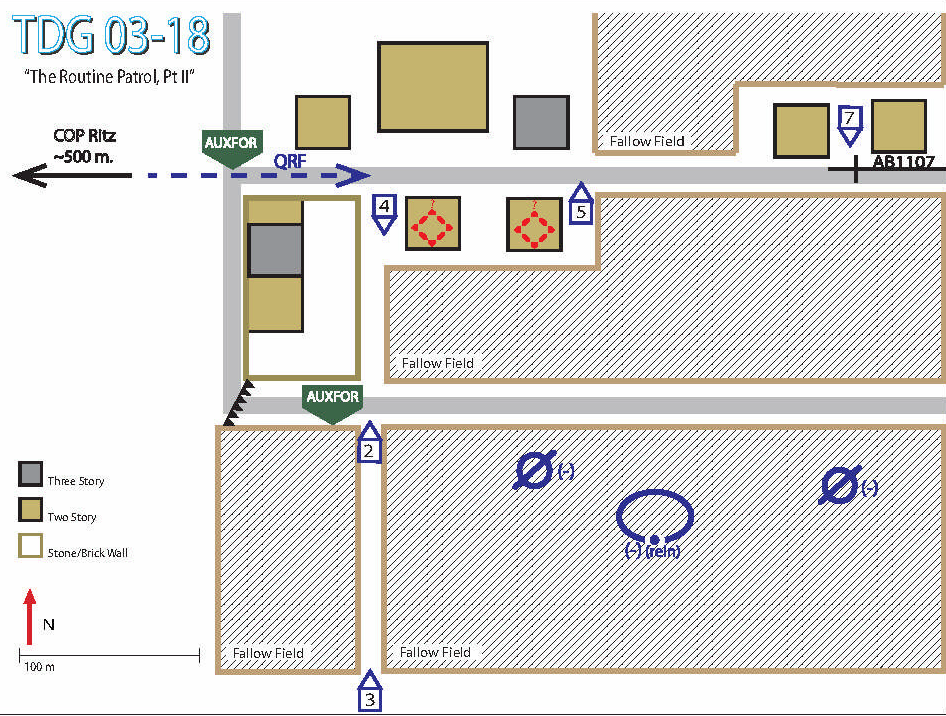 You are the squad leader of 3d Squad, 2d Platoon, A Company, 1st Battalion, 1st Marines. You have been leading a day security patrol east of the company positon at COP Ritz past the Al Mumeet Mosque and southeast of several abandoned farms and fields thickly overgrown with shoulder-high sawgrass and upland cane.
You are the squad leader of 3d Squad, 2d Platoon, A Company, 1st Battalion, 1st Marines. You have been leading a day security patrol east of the company positon at COP Ritz past the Al Mumeet Mosque and southeast of several abandoned farms and fields thickly overgrown with shoulder-high sawgrass and upland cane.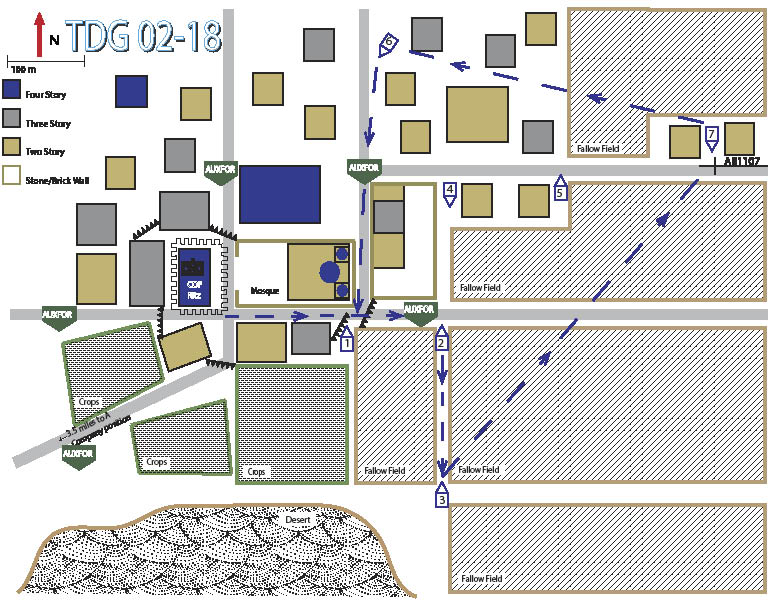
 You are the squad leader of 3d Squad, 2d Platoon, A Company, 1st Battalion, 1st Marines. Your squad has been ordered to conduct a day security patrol east of the company position at COP (combat outpost) Ritz. Your designated patrol route (depicted on Figure 1) will take you out past the Al Mumeet Mosque and southeast to the far side of several abandoned farms and fields thickly overgrown with shoulder-high sawgrass and upland cane. You and your Marines have been on patrol both day and night, approximately every 48 to 72 hours, ever since the company occupied COP Ritz. You and your team leaders are highly experienced in patrolling the congested area surrounding the COP and have been in more firefights than you can remember. On several occasions, you have had to call in the Company’s quick reaction force (QRF) to reinforce your patrol after making contact.
You are the squad leader of 3d Squad, 2d Platoon, A Company, 1st Battalion, 1st Marines. Your squad has been ordered to conduct a day security patrol east of the company position at COP (combat outpost) Ritz. Your designated patrol route (depicted on Figure 1) will take you out past the Al Mumeet Mosque and southeast to the far side of several abandoned farms and fields thickly overgrown with shoulder-high sawgrass and upland cane. You and your Marines have been on patrol both day and night, approximately every 48 to 72 hours, ever since the company occupied COP Ritz. You and your team leaders are highly experienced in patrolling the congested area surrounding the COP and have been in more firefights than you can remember. On several occasions, you have had to call in the Company’s quick reaction force (QRF) to reinforce your patrol after making contact.